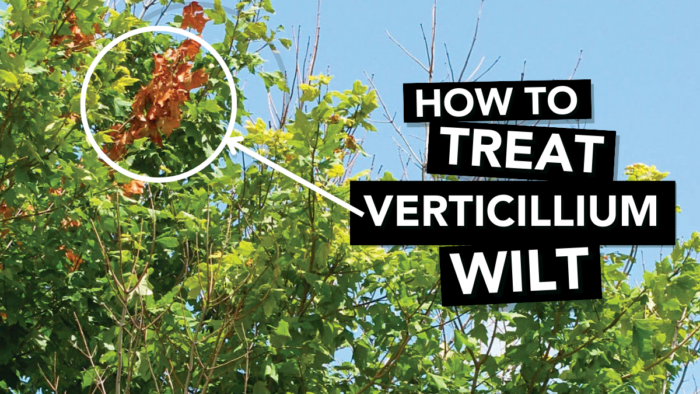
On your morning commute this spring, did you notice a magnolia tree (Magnolia spp. and cvs., Zones 3–9) that only had the left half of its canopy flush out? Did you grow some tomato plants that mysteriously yellowed and wilted, despite having plenty of water? Did you notice your roses (Rosa spp. and cvs., Zones 2–11) slowly decline after you spread mulch chipped from your neighbor’s dead trees? If these scenarios sound familiar, it’s possible you have seen symptoms of verticillium wilt. More on dealing with plant pests and diseases.
What is verticillium wilt?
This is a vascular plant disease caused by fungi in the genus Verticillium—hence the name. The two most common species associated with verticillium wilt are Verticillium dahliae and Verticillium albo-altrum.
This disease can affect a wide variety of plants, including many species of vegetables, weeds, herbaceous ornamentals, shrubs, and trees. The fungi that cause it can survive in the soil for several years on infected plant debris and often infect healthy plants through below-ground tissues that come in contact with this debris, such as roots.
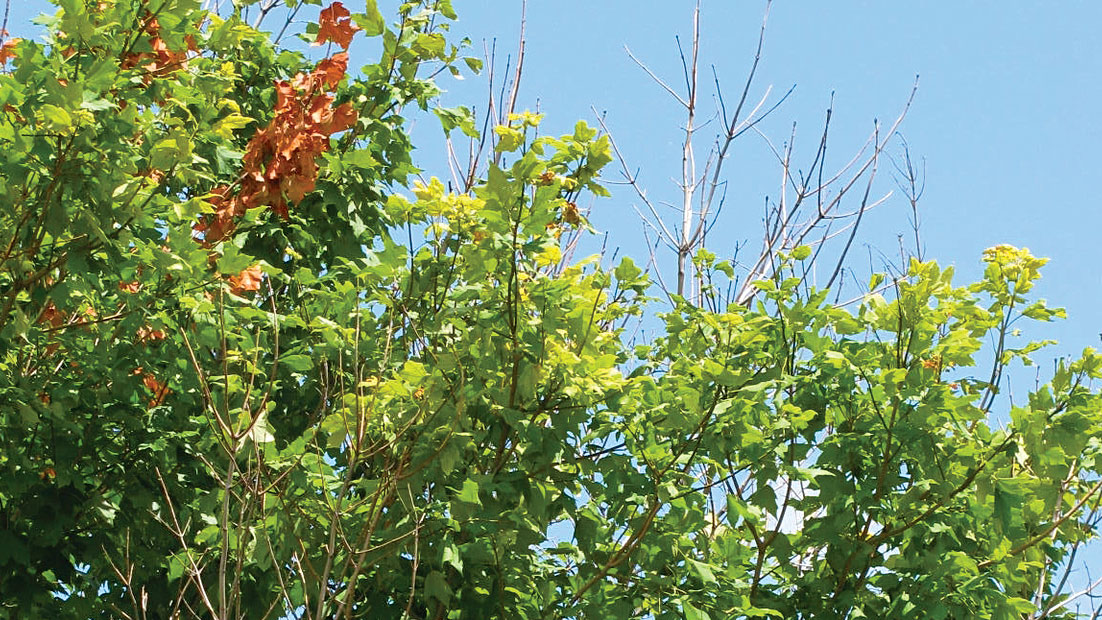
Over time, a fungus colonizes and obstructs a healthy plant’s vascular tissues, the channels that allow the transportation of water and nutrients to upper portions of the plant. The “clogging” of these channels is what causes the wilting symptom associated with this disease. Usually the fungus begins colonizing one section of the plant first and then progresses to new sections.
The Verticillium fungus moves through the vascular tissue of different plants at different speeds. Woody plants develop symptoms more slowly than herbaceous plants, for example. Additionally, environmental conditions contribute to the progression of symptoms; plants that are water-stressed will have symptoms that are more severe than those of plants that receive ample water.
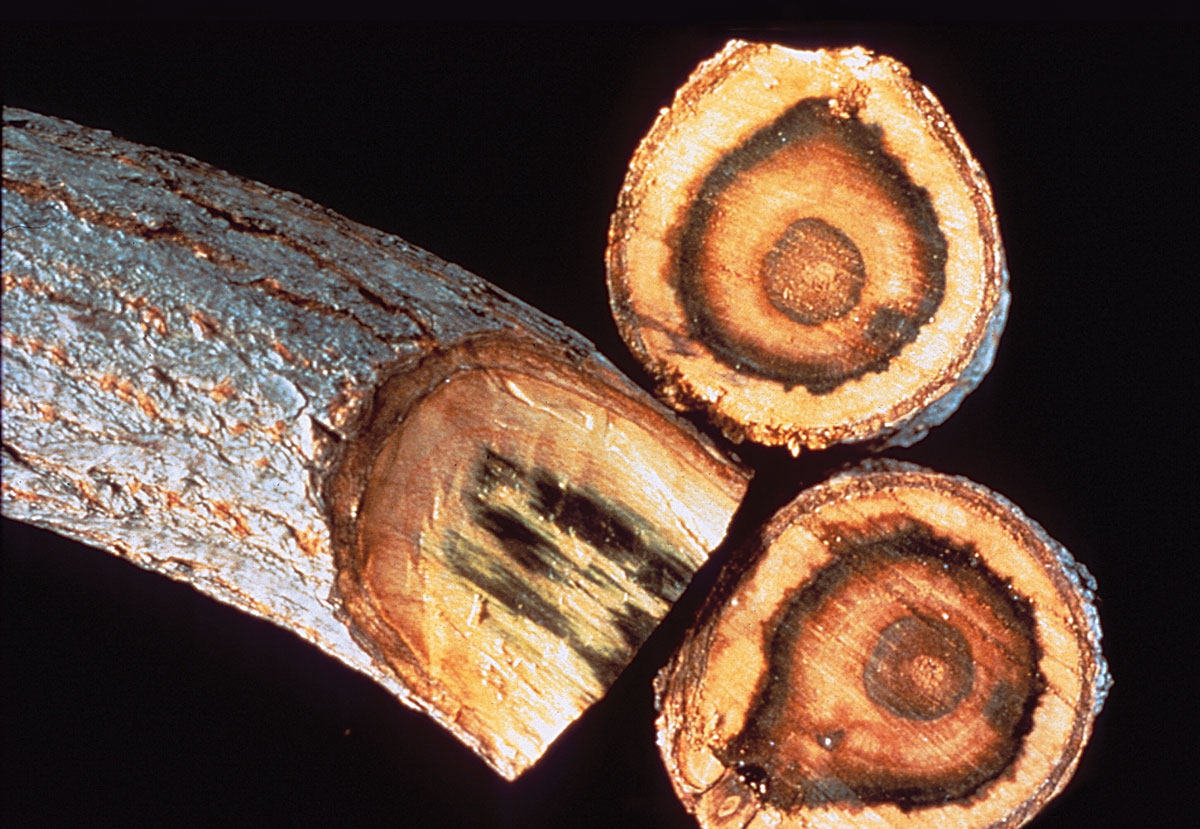
Symptoms of leaf discoloration, wilting, and dieback progress as the fungus continues to grow and spread. In a tree, for example, this may appear as a single branch yellowing and wilting in the first year, followed by several branches dying back the next year, and then half the canopy dying the year after that. If you peel away bark from symptomatic branches or examine a cross section of a branch,
you will often be able to see discolored, brown vascular tissue.
Eventually, plants with verticillium wilt will perish from the disease. There is no cure, but with proper care and mitigation techniques, affected woody plants may survive a few extra years compared to those provided no extra care. Additionally, you can help prevent the spread of verticillium wilt to healthy plants.
Don’t guess—test!There are other plant diseases, such as fusarium wilt, that present symptoms similar to those of verticillium wilt, particularly in herbaceous ornamentals and vegetable crops. To confirm the disease you are dealing with and for additional management recommendations, send a plant sample to your local plant diagnostic laboratory for pathogen culturing and identification. County extension agents can usually submit a sample to a diagnostic laboratory on your behalf, or you can look up the nearest lab by visiting the National Plant Diagnostic Network website. |
What can I do to protect my plants?
Plants that you suspect may have symptoms of verticillium wilt should be isolated from healthy plants as soon as possible. Vegetables and annuals, such as potatoes or sunflowers (Helianthus annuus and cvs., annual), should be pulled from the garden and burned or thrown away in the trash. Do not compost or bury plants that you suspect may have verticillium wilt. This will allow the fungus to spread more easily to healthy plants.
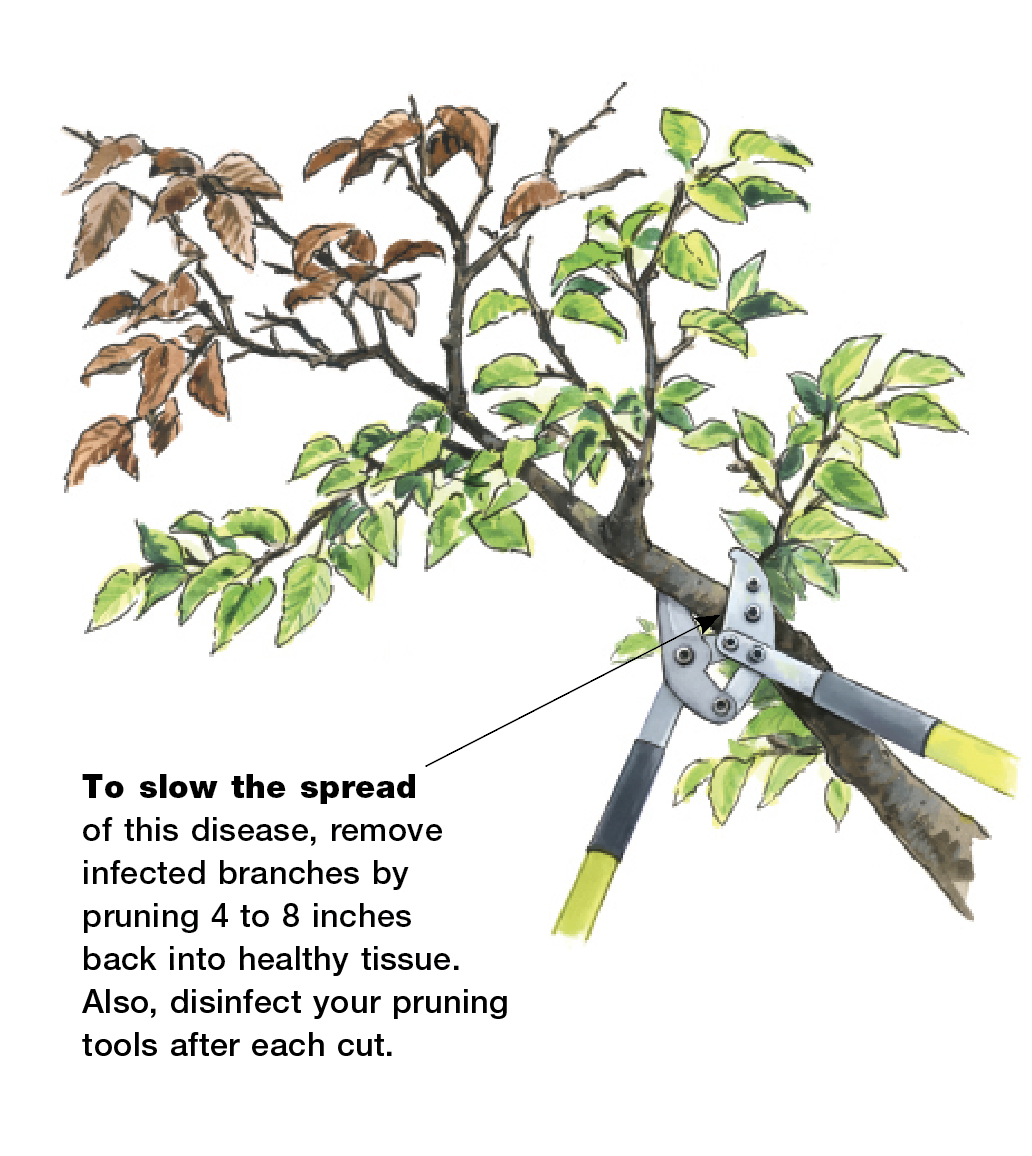
Woody plants may have their symptomatic tissue pruned away to slow the spread of the fungus. Make your pruning cut 4 to 8 inches past the point where symptomatic tissue transitions to healthy tissue. Disinfect your pruning tools after each cut by
spraying them with rubbing alcohol or a similar disinfectant. Do not bury or compost the branches you have removed, and do not convert the tree to mulch after it has died; this allows the fungus to spread to healthy plants through the contaminated mulch. That said, spreading clean mulch around the base of susceptible trees is highly recommended to prevent accidental lawn-mower or string-trimmer damage that may increase disease susceptibility. Provide adequate fertilizer and water to maintain plant vigor.
Whenever possible, select plants for your garden or landscape that are not susceptible to verticillium wilt. Veggies and ornamentals are often bred for Verticillium resistance; you may find this indicated with a “V” in the catalog or on the website, on the seed packet, or on the identification tag at the nursery. If you suspect your shrub or tree has verticillium wilt and needs to be replaced, do not select the same species as the one you are replacing.
Woody plants resistant to verticillium wilt
Many woody plants are naturally resistant to Verticillium infection, including these:
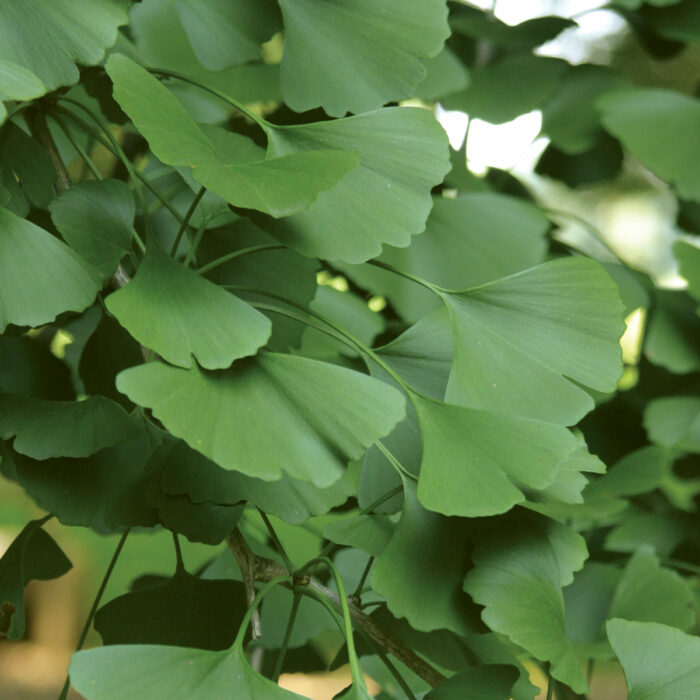
- Firs (Abies spp. and cvs., Zones 3–9)
- Palms (all members of Arecaceae)
- Birches (Betula spp. and cvs., Zones 2–9)
- Citrus (Citrus spp. and cvs., Zones 9–11)
- Gingkos (Ginkgo biloba and cvs., Zones 3–9)
- Hollies (Ilex spp. and cvs., Zones 4–11)
- Spruces (Picea spp. and cvs., Zones 2–9)
- Pines (Pinus spp. and cvs., Zones 2–11)
- Willows (Salix spp. and cvs., Zones 3–9)
- Yews (Taxus spp. and cvs., Zones 4–8)
- Arborvitaes (Thuja spp. and cvs., Zones 2–9)
- Cycads (Zamia spp. and cvs., Zones 11)
 |
 |
Nicholas Goltz, DPM, is a plant pathologist and extension educator located in the northeastern United States, where he helps growers and homeowners find holistic and comprehensive solutions for plant problems.
Fine Gardening Recommended Products
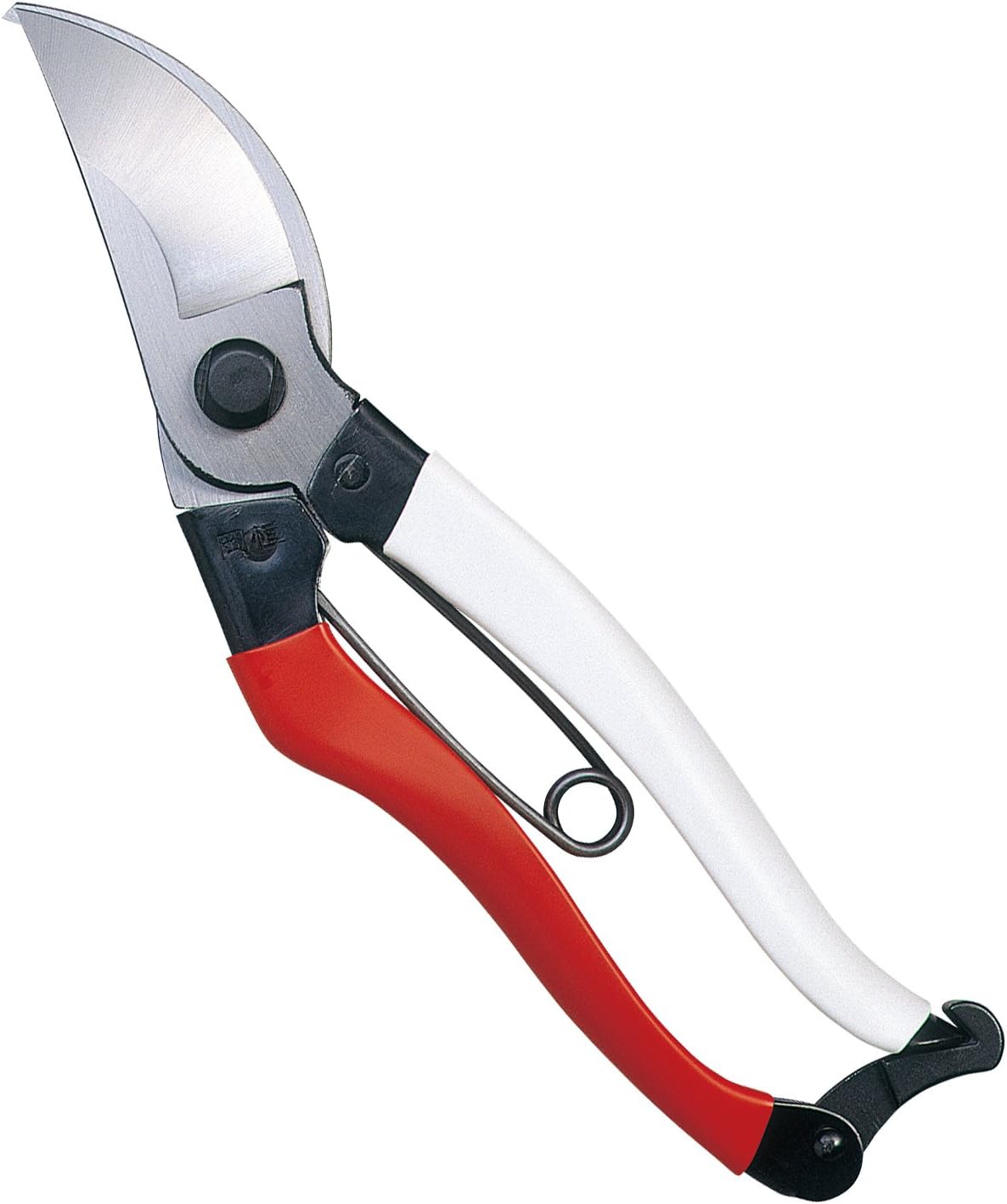
Okatsune 103 Bypass Pruners General Purpose Medium
Fine Gardening receives a commission for items purchased through links on this site, including Amazon Associates and other affiliate advertising programs.

ARS Telescoping Long Reach Pruner
Fine Gardening receives a commission for items purchased through links on this site, including Amazon Associates and other affiliate advertising programs.

A.M. Leonard Deluxe Soil Knife & Leather Sheath Combo
Fine Gardening receives a commission for items purchased through links on this site, including Amazon Associates and other affiliate advertising programs.



















Comments
Log in or create an account to post a comment.
Sign up Log in